
All categories
Featured selections
Trade Assurance
Buyer Central
Help Center
Get the app
Become a supplier

(1504 products available)




































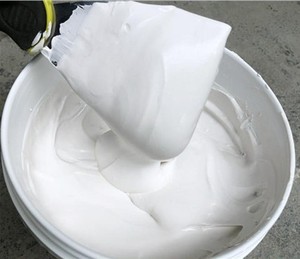
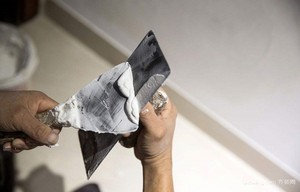
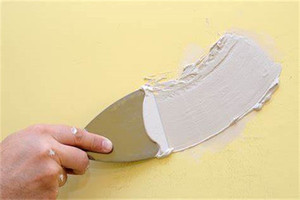
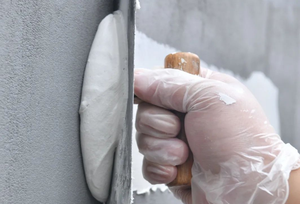






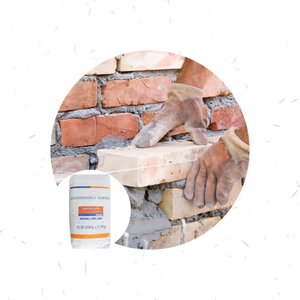





A waterproof cement render is a plaster that is applied to the walls of buildings to create a smooth surface or finish. It is made from sand, cement, and additives that make the render waterproof. It is applied to exterior walls to help prevent water from seeping through the walls. It is ideal for areas where there is a lot of moisture or water, such as in coastal regions, rainy climates, or near swimming pools and fountains. Waterproof cement render is used in both residential and commercial construction projects.
Waterproof cement render comes in different types and can be used for various applications. Here are some of its types:
Standard Waterproof Cement Render:
This type of waterproof cement render is applied to masonry walls and is commonly used for residential buildings. It consists of a mix of Portland cement, sand, and water. Additives, such as waterproofing compounds, are added to the mix to enhance its water-resistant properties. This render creates a smooth and durable finish.
Polymer-Modified Waterproof Cement Render:
It is a modern type of waterproof cement render that is used to improve the performance of traditional cement renders. It consists of a blend of Portland cement, sand, and polymer additives, such as acrylic emulsions. These polymer additives enhance the water resistance of the render, improve adhesion, and reduce shrinkage cracking. This render has a flexible and smooth finish.
Hydraulic Lime Render:
This type of waterproof cement render is suitable for older buildings or those made with natural materials. It is made from hydraulic lime, sand, and water. The hydraulic lime used in this render is water-resistant and allows the walls to breathe. This cement render is also environmentally friendly and has a traditional finish.
Specialized Waterproof Cement Renders:
There are various types of specialized waterproof cement renders that are used for specific applications. For example, pool render is a waterproof cement render that is specifically designed to be used in swimming pools. It often contains quartz sand or other additives to improve its water resistance and create a smooth finish.
Textured Waterproof Cement Renders:
Textured waterproof cement renders are available in a range of pre-made textures, such as stucco, pebble dash, or smooth float. These renders add decorative finishes to walls while providing waterproofing protection.
Durability and Longevity:
Waterproof cement renders are durable and long-lasting. They withstand harsh weather conditions without losing their structural integrity. These renders also resist rotting, pests, and fungi. This means the surfaces remain protected for a long time. Waterproof cement renders create a long-lasting, low-maintenance finish.
Weather Resistance:
Waterproof cement renders are resistant to extreme weather conditions. They resist heavy downpours, strong winds, high humidity, and intense sunlight. These renders protect the walls from cracking, dampness, mold growth, and algae. They prevent water from seeping into the walls even in areas with high rainfall. Waterproof cement renders also reflect sunlight, preventing walls from overheating or fading in sunny climates. Their ability to resist weather elements makes them perfect for coastal homes near the ocean. The renders protect the walls from saltwater damage and corrosion caused by wind-driven rain.
Moisture Control:
A waterproof cement render's primary purpose is to prevent water penetration. It creates a barrier that stops water from entering the walls, preventing dampness and mold growth. Some waterproof renders allow moisture to escape while blocking water from the outside. This balances the wall and prevents issues like cracking. Waterproof cement renders are ideal for basements. They prevent flooding and water accumulation in underground spaces.
Thermal Insulation:
Waterproof cement renders provide thermal insulation. Insulated waterproof renders have tiny air pockets that reduce heat transfer. This keeps buildings warm in winter and cool in summer. Using insulated waterproof renders reduces the amount of energy used for heating and cooling. Thermal insulated waterproof renders also reduce condensation. Their warm surface prevents moisture from forming droplets, which can cause mold.
Aesthetic Appeal:
Waterproof cement renders improve the appearance of walls and outdoor surfaces. They come in different textures, colors, and finishes. This allows builders to create visually appealing spaces. Waterproof cement renders are smooth, textured, or patterned. They can be painted in different shades to match the design of a building.
Easy Application:
Waterproof cement renders are simple to apply. Builders mix the waterproof additive with the cement in the ratio recommended by the manufacturer. They then apply it to the desired surface. These renders cure well, forming a strong bond with the underlying material.
Waterproof cement render is a versatile material commonly used in construction and renovation projects. Its usage spans different industries and applications. Here are some common usage scenarios:
Building and Construction
Waterproof cement renders are primarily used in the construction of walls. It provides an effective waterproof barrier to external walls. This helps to protect the structure from moisture penetration, especially in basements and foundation walls. It is also used to create a smooth, hard, and durable surface finish on walls and ceilings. This is usually required in residential, commercial, and industrial buildings. Additionally, it is used to provide a decorative finish. Some types of waterproof cement render contain additives or aggregates that provide a textured, colored, or patterned finish.
Swimming Pools and Water Features
Waterproof cement render is used in the construction of swimming pool shells. This is because it provides a smooth and waterproof surface that is ideal for water containment. It is also used to create water features such as fountains, waterfalls, and ponds.
Bathrooms and Wet Areas
It is used to line the walls and floors of showers, baths, and wet rooms. This helps to ensure effective waterproofing. Additionally, it is used to create waterproof niches and ledges for toiletries and storage.
Commercial and Industrial Applications
Waterproof cement render is used in commercial kitchens and food processing facilities. It is easy to clean and helps to prevent the growth of mold and bacteria. It is also used in the construction of warehouses, parking garages, and industrial facilities. This is because of its durability and moisture-resistant properties. Waterproof cement render is used in the construction of silos, tanks, and storage containers for liquids. It provides a water-resistant barrier that helps to prevent leakage and seepage.
Landscaping and Outdoor Features
It is used in the construction of outdoor kitchens and barbecues. This helps to ensure the longevity of structures and surfaces. Waterproof cement render is also used to create textured finishes on walls, columns, and other architectural elements. This helps to create a cohesive and decorative finish. In landscaping, it is used to build raised garden beds, planters, and other structures.
Infrastructure Projects
Waterproof cement render is used in the construction of bridges, tunnels, and culverts. It provides a durable and waterproof barrier to ensure structural integrity. It is also used in the construction of retaining walls, abutments, and other earth-retaining structures.
Location
Where the building is found impacts what kind of cement render ought to be utilized. For places with loads of downpour, a waterproof cement render should be utilized to keep the structure dry. In areas with less downpour, a standard cement render might work.
The Type Of Render
Waterproof cement renders, for example, polymer-modified renders, hydraulic and air-entrained cement, and colored waterproof cement renders, should be considered.
Quality
It is essential to look at the nature of the waterproof cement render being bought. Excellent waterproof cement renders might be more costly yet will give better outcomes that last longer.
Application
A waterproof cement render should be utilized on outside walls, while a standard one should be used in other areas. Important walls should be protected with waterproof cement render coatings.
Wall Condition
If the walls are in good shape, a thin coat of waterproof cement render can be applied. However, if the walls are damaged, they may need to be patched up before putting on the render.
Cost
A waterproof cement render comes in different price ranges. It is essential to find one that fits the budget without giving up quality. Sometimes, cheaper options can be of poor quality, so it is vital to pick wisely.
Compatibility
Ensure that the waterproof cement render works well with the materials already used on the walls. This will help ensure everything sticks properly and works as it should.
Aesthetic Finish
Consider the finish of the waterproof cement render. Go for one that provides the desired look, whether smooth or textured. It should also be paintable if that is what is wanted.
Q1: Is waterproof cement render suitable for all climates?
A1: Yes, waterproof cement render is suitable for all climates. It helps to protect against moisture, which is particularly important in rainy or humid climates. It also provides insulation in colder climates and keeps the house cool in hotter climates.
Q2: How long does waterproof cement render last?
A2: When applied correctly, waterproof cement render can last up to 20 years or more. Its lifespan largely depends on the quality of the materials used, the skill of the applicator, and the type of substrate it is applied to.
Q3: Can waterproof cement render be painted?
A3: Yes, waterproof cement render can be painted. In fact, using breathable, water-resistant paint on waterproof cement render enhances its waterproofing properties while allowing moisture to escape from the walls.
Q4: Does applying waterproof cement render require professional skills?
A4: Yes, applying waterproof cement render requires professional skills to ensure it is applied correctly. Proper application is crucial to achieving a seamless, durable, waterproof finish. It also involves technical knowledge of the right material ratios and application techniques.
Q5: Is waterproof cement render more expensive than traditional render?
A5: Not significantly. The cost depends on various factors, such as the brand, additional waterproofing additives, and the required finish. However, its long-term benefits, such as reduced maintenance and repair costs due to moisture damage, can make it a more economical choice.